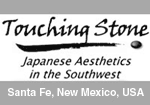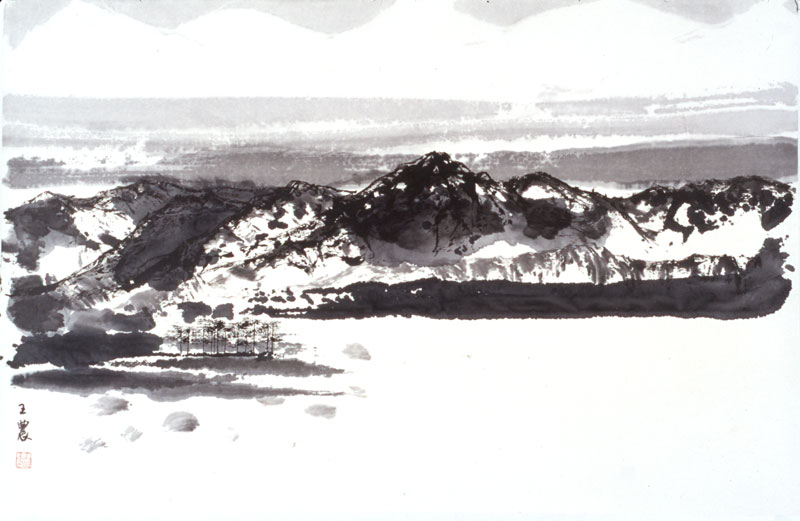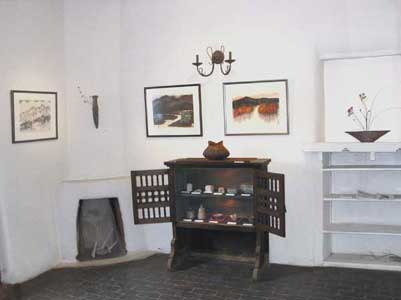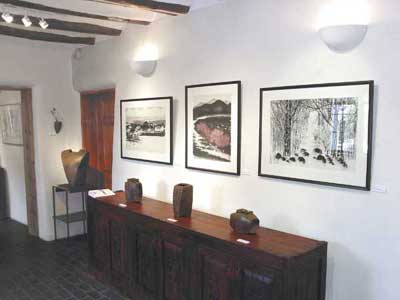
| Wang Nong 王農 |
| Landscapes of the Mind |
| June 2 - 28, 2006
Click to see Wang Nong's 2010 show Click to see Wang Nong's previous show This exhibition is dedicated to Fan Mei 樊楣 (1952-2004). |
 |
|
"Making art is like having a conversation. I like to speak simply. I like to speak the truth." - Wang Nong |
Click on the images to view selected paintings.
Inquiry/order: director@touchingstone.com, see Inquiry/Order
|
About the artist Wang Nong Born in Beijing in 1953 as the second son of respected Chinese artist and philosopher Wang Sen-Ran王森然, Wang Nong aspired to an artist career since childhood. By a horrible twist of fate, his dream almost never came true. In 1969, when Wang Nong was 16, China fell into the vise grip of the Cultural Revolution. Perceived as one of the privileged, Wang was sent to a labor camp in the remote Black Dragon River district, known as the "Northern Vast Wilderness". Wang endured six years of hard labor in a place that was extraordinarily hostile yet beautiful. Without access to painting materials, he found respite by mentally painting what he saw. By the time he returned to Beijing in 1975, he had missed the opportunity for a higher education. He felt a great sense of loss, for himself and for his generation of promising talents. To find emotional retribution, he turned again to sumi-e (Oriental ink painting). Using ink and Chinese colors, his bold forceful brush strokes turned memories of the Northern Vast Wilderness into startlingly beautiful landscapes. To this date, Wang continues to paint from memory. When he travels, he rarely makes sketches. Instead, he would mentally record the journey. Upon returning from a trip, he would immerse himself in his studio, painting from what he has seen in his mind. His landscapes are not mere reproduction of static scenery, but an intimate communion with the artist's heart. Wang Nong gradually built a reputation in China for his distinctive style of sumi-e. In 1987, he was sent by China as a representative of Chinese artists to exhibit in Holland, on invitation by the Rijks Museum in Amsterdam. One of his paintings from the exhibition was acquired as permanent collection by the museum. Soon afterward, Wang became the first Chinese artist invited to work in Japan under a new cultural exchange program. His unique style gained immediate recognition in Japan. In 1987, he received an award in the National Premier Sumi-e Painting Exhibition. A year later, Wang finally fulfilled his dream and entered a graduate program in Tokyo Metropolitan University. After finishing the program, he was joined by his wife and son in Tokyo, where he joined the National Chiba University as a visiting scholar. In the ensuing years, Wang exhibited widely and became one of the most sought after sumi-e artists in Japan. In 2001, Wang launched his successful America debut at Touching Stone Gallery, and followed with a second show a year later. Fate has never been kind to Wang. Just when his life appeared to have taken a better turn, his wife Fan Mei was diagnosed with brain tumor. After two agonizing years, she passed away in the fall of 2004. The current exhibition is the first for Wang in 4 years. The show includes more than a dozen new works finished after his wife's death. While some of the works evoke familiar Chinese landscapes, others take on an abstract, almost dream-like quality. Wang insists that he is not moving deliberately towards abstraction. Instead, he recalls that he painted some of the pieces in an almost subconscious state, when his mind seemed to be floating between reality and a dream. The new works are at once beautiful and melancholic, as if the artist yearns to be absorbed in the beautiful landscapes. If art is indeed a personal dialog, Wang Nong's paintings are profound and eloquent statements, spoken with complete honesty from the heart of a great artist. Selected Exhibitions (from over 100 in career) 1987 Rijks Museum, Amsterdam, Holland 1989 Gallery Ginza Salon, Ginza, Tokyo 1990 Gallery Tochi, Ginza, Tokyo 1990 Daimaru & Sogo Department Store, Osaka 1990 Sogo Department Store, Nara 1991 Gallery Tochi, Ginza, Tokyo 1992 Tohbu Department Store, Tokyo 1992 Lecture and Exhibition, Nobeoka 1993 Japan-China Friendship Museum, Tokyo 1993 Ozu Washi Museum, Tokyo 1994 Ozu Washi Museum, Tokyo 1995 Ozu Washi Museum, Tokyo 1996 Kyobashi Art Museum, Tokyo 1996 General Culture Center, Nobeoka 1997 Gallery Himawari, Ginza, Tokyo 1998 Izukohgen Museum, Shizuoka 1998 Keioh Plaza Hotel, Shinjuku, Tokyo 2001 Touching Stone Gallery, Santa Fe, New Mexico 2002 Touching Stone Gallery, Santa Fe, New Mexico 2006 Touching Stone Gallery, Santa Fe, New Mexico
References Wang Nong’s Album of Paintings. 1998. Shanghai Fine Art Publisher.
|
|
|
|
|

